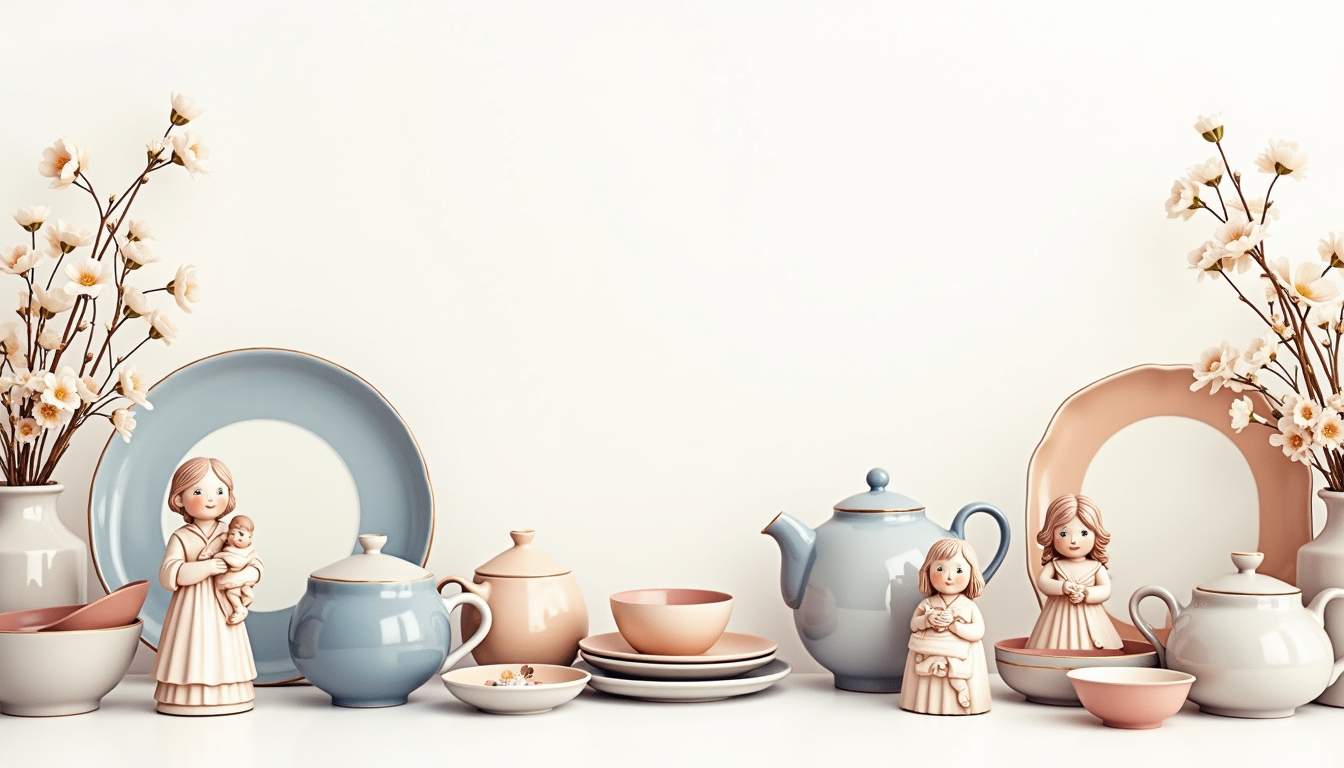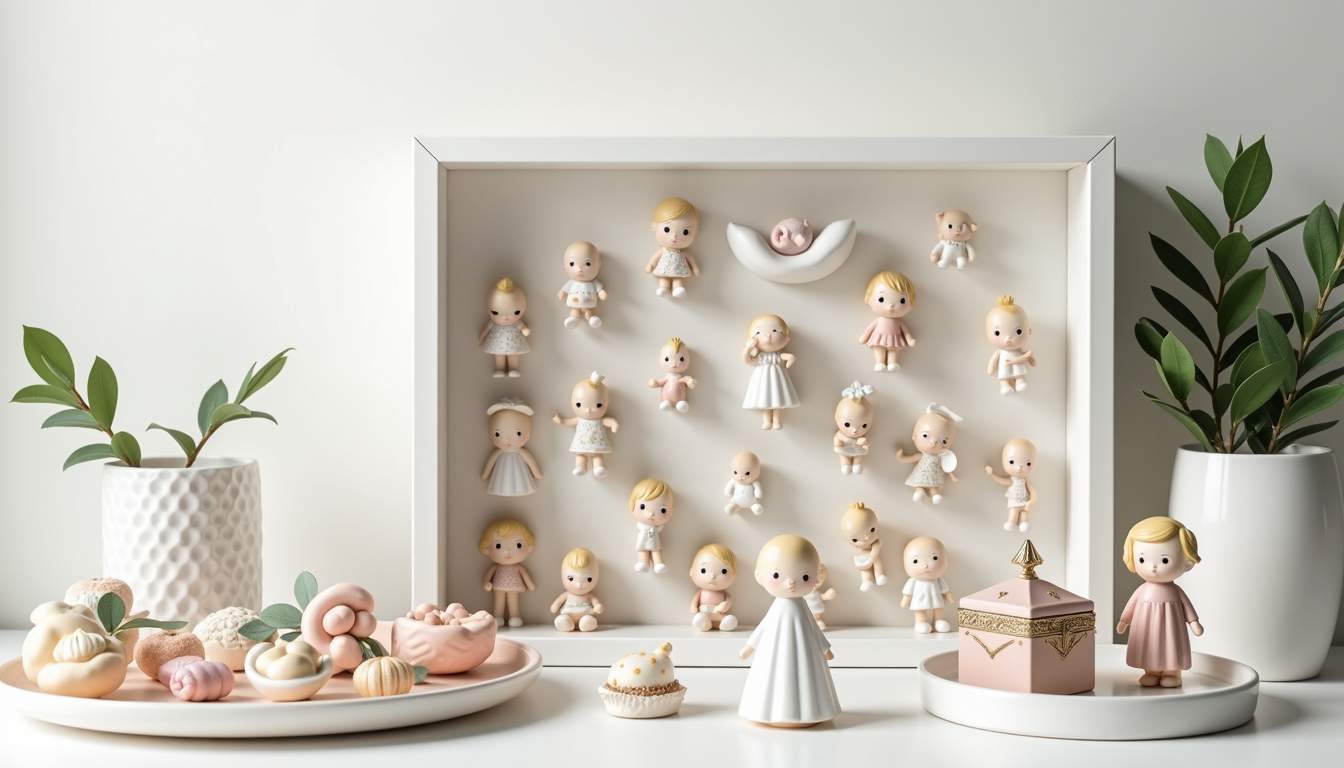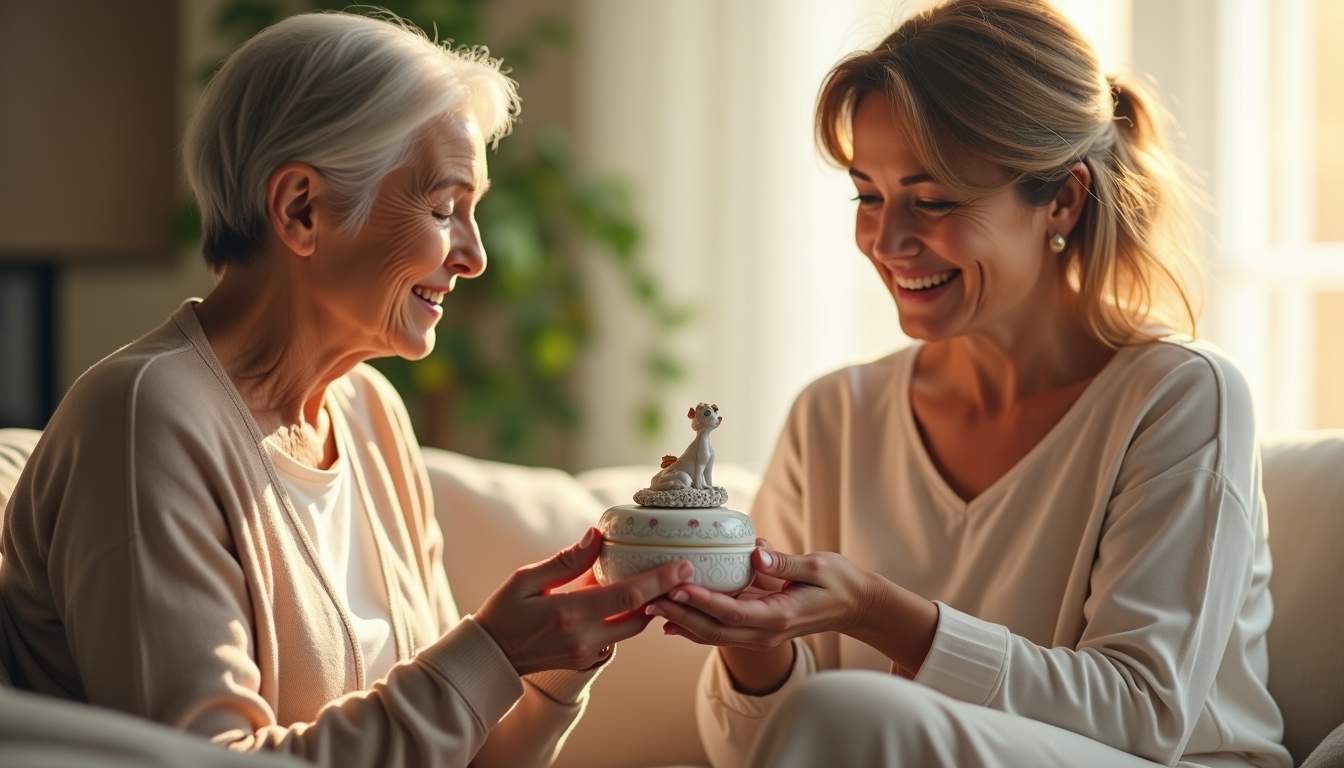Porcelain keepsakes-those delicate, often miniature treasures-carry stories that span generations. Maybe it’s a tiny figurine passed down from a great-grandparent, a hand-painted trinket box from a childhood trip, or a fragile ornament that always graced the family mantel during holidays. These small objects might seem insignificant at first glance, but with a little care and intention, they can become cherished heirlooms that connect your family’s past, present, and future.
Why Porcelain Keepsakes Matter
Porcelain has a unique charm. Its smooth, glossy surface and intricate craftsmanship make even the smallest pieces feel special. Unlike mass-produced items, many porcelain keepsakes were made with care, often hand-painted or crafted by skilled artisans. This gives each piece a personality and a story. The artistry involved in creating porcelain is often a labor of love, where each brushstroke and glaze application is a testament to the maker’s dedication. The history of porcelain itself, dating back to ancient China, adds another layer of depth to these keepsakes, connecting us to centuries of tradition and craftsmanship.

Beyond their beauty, these keepsakes hold emotional value. They often represent moments frozen in time—birthdays, anniversaries, travels, or milestones. The tactile experience of holding a porcelain piece can evoke memories and emotions that photos or digital records simply can’t. For instance, a delicate porcelain teacup might remind someone of quiet afternoons spent with a beloved grandparent, sharing stories over tea. Each piece can serve as a portal to the past, allowing us to relive cherished experiences and connect with loved ones who may no longer be with us.
The Fragility Factor
Porcelain’s delicate nature is both a blessing and a curse. Its fragility means these keepsakes require thoughtful handling and storage. But that very fragility can also make them all the more precious. When a family member carefully hands down a porcelain figurine, it’s a gesture filled with trust and love, a tangible connection to heritage. This fragility encourages us to treat these items with reverence, fostering a deeper appreciation for their beauty and the memories they encapsulate. It also invites us to create rituals around their care, such as displaying them in a special cabinet or incorporating them into family traditions, further enhancing their significance.
Moreover, the fragility of porcelain can inspire creativity in how we choose to display these keepsakes. Many collectors curate their porcelain treasures with an eye for aesthetics, arranging them in ways that tell a story or highlight their unique features. From elegant shelves adorned with a mix of vintage and contemporary pieces to themed displays that reflect personal passions, the way we showcase porcelain can transform our living spaces into galleries of memory. This artistic expression not only honors the craftsmanship behind each piece but also invites conversation and connection with others who appreciate the beauty of these delicate artifacts, and if you’re looking for truly unique pieces, you can visit Camp Hollow for beautifully crafted porcelain art.
Assessing and Preserving Your Porcelain Keepsakes
Before turning a porcelain item into a family heirloom, it’s important to understand its condition and history. This helps ensure its longevity and enriches the story you’ll share with future generations.
Identifying the Origin and Story
Start by learning as much as you can about the piece. Look for maker’s marks, signatures, or stamps on the bottom or back. These clues can reveal the manufacturer, country of origin, and sometimes even the year it was made. Online databases and collector forums are invaluable resources for decoding these marks.
Ask family members if they know the story behind the item. Was it a gift? A souvenir? A wedding favor? Even vague memories can add layers of meaning. Document these stories—write them down or record conversations. This narrative will be part of the heirloom’s legacy. Additionally, consider researching the historical context of the time period when the piece was created. Understanding the cultural influences or events that may have inspired its design can further enrich the narrative you share with future generations.
Cleaning and Handling with Care
Cleaning porcelain requires a gentle touch. Avoid harsh chemicals or abrasive materials that can damage glaze or paint. A soft cloth dampened with warm water usually does the trick. For stubborn dirt, a mild soap diluted in water can be used sparingly. Always dry the piece thoroughly to prevent moisture damage.
When handling porcelain, support it with both hands, especially if it’s oddly shaped or has delicate appendages like handles or spires. Wearing cotton gloves can prevent oils from your skin from transferring onto the surface, which over time can dull the finish. It’s also wise to create a dedicated space for these items, free from high-traffic areas where they might be accidentally knocked over. Establishing a routine for checking the condition of your porcelain pieces can help catch any potential issues before they become serious problems.
Proper Storage Solutions
Protecting porcelain from chips, cracks, and discoloration is key. Store pieces in padded boxes or display cases with soft lining. Avoid stacking items directly on top of each other. If displaying on shelves, consider placing non-slip mats underneath to prevent sliding.
Keep porcelain away from direct sunlight and extreme temperature changes, which can cause fading or cracking. A stable environment with moderate humidity is ideal. Additionally, consider using silica gel packets in storage boxes to help control moisture levels. Regularly inspect your storage environment for any signs of pests or mold, which can pose a threat to your cherished items. Creating a climate-controlled display area can also enhance the visual appeal of your porcelain collection while ensuring its preservation for years to come.
Creative Ways to Showcase Porcelain Keepsakes
Displaying porcelain keepsakes thoughtfully can turn them into focal points of your home and conversation starters for guests. The right presentation also honors their significance.

Shadow Boxes and Glass Cabinets
Shadow boxes are perfect for grouping several small porcelain items together. They protect the pieces from dust and accidental knocks while allowing a clear view. Arrange the keepsakes with a backdrop that complements their colors and styles. Adding small labels with brief stories or dates can personalize the display.
Glass cabinets, especially those with interior lighting, highlight the glossy finish and fine details of porcelain. Adjustable shelves help accommodate items of various sizes. Choose cabinets with lockable doors if you want extra security.
Incorporating Keepsakes into Everyday Spaces
Porcelain doesn’t have to be tucked away. Integrate your keepsakes into daily life by placing them on bedside tables, mantelpieces, or kitchen shelves. A tiny porcelain vase can hold fresh flowers, while a trinket box can store jewelry or special notes.
Rotating your displays seasonally or for special occasions keeps the items feeling fresh and relevant. For example, a porcelain angel figurine can be part of your holiday décor, while a miniature teapot might brighten up a springtime tea party setup.
Custom Framing and Mounting
For particularly flat or delicate porcelain pieces, custom framing behind glass can protect and showcase them like artwork. This is especially effective for hand-painted tiles or plates. Mounting porcelain on wooden plaques or stands can also add a rustic or vintage charm.
Passing Down Porcelain Keepsakes with Meaning
Turning a porcelain keepsake into a family heirloom is about more than preservation-it’s about creating a tradition of storytelling and connection.

Sharing Stories Across Generations
When handing down a porcelain item, share its history and significance. Tell the story of how it came into your family, what it represents, and why it matters. Encourage the next generation to add their own memories or notes about the piece.
Consider creating a family heirloom journal or digital archive where these stories and photos of the keepsakes are stored. This adds depth and context that enrich the heirloom beyond its physical form.
Establishing Heirloom Rituals
Make the passing down of porcelain keepsakes a special event. It could be a birthday tradition, a holiday gathering, or a milestone celebration. Present the item with care, perhaps wrapped in a beautiful cloth or accompanied by a letter explaining its importance.
These rituals reinforce the emotional value of the keepsake and help younger family members appreciate the responsibility and honor of becoming its new caretaker.
Repairing and Restoring with Respect
Sometimes porcelain keepsakes arrive with chips, cracks, or faded paint. Rather than discarding them, consider professional restoration. Skilled conservators can repair damage while maintaining the piece’s authenticity.
However, it’s important to balance restoration with preserving original features. Over-restoration can erase the character and history embedded in the item’s wear and imperfections. Discuss options carefully with experts before proceeding.
Creating New Keepsakes Inspired by Porcelain Traditions
Heirlooms don’t always have to be old. New porcelain pieces inspired by family traditions can start fresh legacies.
Commissioning Custom Porcelain
Many artisans and studios offer custom porcelain work. Commission a piece that reflects your family’s story-a figurine representing a beloved pet, a plate with a family crest, or a vase painted with symbols meaningful to your heritage.
This approach blends the old with the new, ensuring that the tradition of porcelain craftsmanship continues in your family.
Involving Younger Generations
Encourage children and grandchildren to participate in creating or decorating porcelain keepsakes. Workshops and pottery classes can be fun ways to engage them with the material and the art form.
These experiences foster appreciation and personal connection, making the resulting pieces even more treasured.
Combining Porcelain with Other Family Mementos
Sometimes, pairing porcelain keepsakes with photographs, letters, or textiles creates a richer narrative. For example, a porcelain locket might be displayed alongside an old family photo or a handwritten note.
This multi-dimensional approach broadens the heirloom’s meaning and appeal, making it a centerpiece of family history.
Final Thoughts
Turning tiny porcelain keepsakes into cherished family heirlooms is a rewarding journey. It requires care, storytelling, and a bit of creativity. These delicate pieces hold more than just their physical form-they carry memories, emotions, and connections that span time.
By preserving, displaying, and passing down porcelain treasures thoughtfully, families can keep their histories alive and create meaningful traditions for generations to come.


